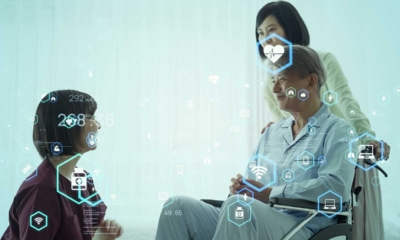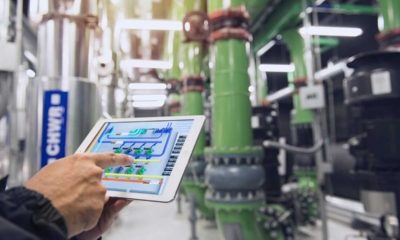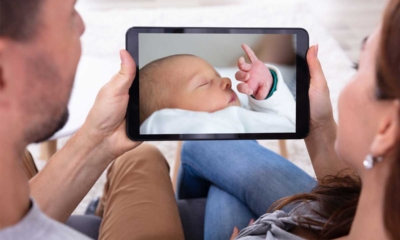
Envision a new virtual experience, an internet where we not only upload pictures of our coffees, perfumes, and recipes—but also share their smells.
A few innovative startups are pioneering new approaches to digital smell technology, enabling users to sense, transmit, and receive smell through the internet and various devices. The technology centers upon a collection of scientific disciplines like organic chemistry, machine learning, data science, photonics, silicon engineering, and software engineering.
Olfaction technology includes the use of electronic devices (often called e-noses) to replicate and detect odors. The devices can mimic the human sense of smell using sensor arrays that respond to various chemical compounds. When these sensors detect specific odors, they produce unique patterns that software algorithms can analyze and interpret.
Endless Real-World Applications
Digital scent innovators believe their technology can unlock countless possibilities and revolutionize various industries. Potential applications could include:
Product Design and Branding
Companies could leverage digital olfaction to create memorable product experiences. Perfume manufacturers could allow customers to sample fragrances virtually before making a purchase. Restaurants and delivery services could enhance their digital menus. Integrating scents into marketing campaigns and advertisements could also evoke emotions and boost brand recognition.
Extended Reality and Media
Designers could add a new layer of sensory immersion to virtual reality experiences. Digital olfaction technology could enable users to see, hear, and smell their virtual surroundings. This could enhance gaming, entertainment, and virtual tourism experiences through more immersive environments.
Quality Control and Environmental Monitoring
In the food and beverage industry, e-noses could assess ingredients’ quality, freshness, and authenticity, helping producers maintain consistent product standards. The tech could also play a critical role in monitoring and assessing environmental conditions to detect pollutants, gases, and emissions.
Healthcare and Medical Diagnosis
E-noses could assist in the early detection of conditions that produce distinct odors, such as diabetes, cancer, and infections. Medical devices could also integrate e-noses to monitor patients’ breath for real-time health assessment and augment the impact of mental health treatments.
Two main branches of scent technology have emerged:
Detection and Analysis of Digital Smells
Digital olfaction involves the digital capture and creation of scents. It mimics the process the human brain uses to identify and differentiate odors. The technology captures odor signatures for display and analysis via software solutions.
In digital olfaction, a sensor acts as the nose or receptor for odor molecules. The software then interprets information from the sensor using a database of odors that have already been collected and analyzed and can then provide organizations with actionable insights based on the sensed data.

Synthesis and Reproduction of Digital Scents
A combination of chemicals, natural compounds, and aromatic molecules can be synthesized to recreate specific scents. Devices known as “scent generators” or “scent synthesizers” release these scents to enhance the overall sensory immersion of users.
Today, there are real-world companies making progress in the space of smell technology:
Aryballe
Aryballe1 is a startup combining biochemical sensors, machine learning, and advanced optics in a single solution to collect, display, and analyze odor data. Aryballe provides these insights to companies looking to turn odor data into business assets that enhance products and consumer experiences.
Aryballe’s bio-based approach using silicon photonics and machine learning can be applied to use cases in research and development (R&D), quality control (QC), and operations. Some of the industries leveraging their solutions include food and beverage, consumer packaged goods, air quality, industrial, and health and wellness.
Aromyx
Aromyx2 is a biotech startup that measures taste and smell using synthetic biology and data science. Their technology uses human olfactory receptors in cell-based assays to replicate the biology of the human nose and provide insights to their customers. Their data can enable organizations to innovate the design of new products, target demographics, predict trends, and solve issues around sustainability and health.
Osmo
Osmo3 is building the foundational capabilities to enable computers to do everything noses can do. With Google Cloud’s AI technology, Osmo is tackling the challenge of mapping the human sense of smell. Using machine learning and artificial intelligence, Osmo is working to catalog the 40 billion molecules that are likely to exist and have a scent4.
Their “odor map” will categorize scents and cluster molecules that smell alike together. While Osmo’s entry point is flavor and fragrance, its ultimate goal is to improve human health and well-being by detecting diseases earlier, growing more food, tracking pandemics, and repelling insects.
Weizmann Institute of Science
A team at the Weizmann Institute5 in Israel has also reported their creation of a molecular “smell map6“ that could recreate nearly every scent possible. This map could determine how humans smell any odor by analyzing its molecular structure.
Their scientists—including neurobiologists, computer scientists, and a master perfumer—believe their innovation has opened the door to a future where a computer could digitize and reproduce any scent on demand. The study has endless potential for cell phones and computers and could impact environmental monitoring and the biomedical and food industries.
The Future of Fragrance
As digital scent technology continues to evolve, it’s clear that our digital experiences will become more multi-sensory and immersive than ever before. Digital olfaction promises to introduce a new dimension of scents to our digital journeys.
How Ambiq is Contributing
Implementing digital smell technology to endpoint devices will require heavy lifting from AI as smells will need to be processed and analyzed to then be sent back to end users. This can quickly run through battery life. Energy efficient solutions like the SoCs at Ambiq® excel at enabling millions of devices to perform inferencing with up to 16x less power consumption than other processors on the market.
References
1 Aryballe | 2023
2 Aromyx | 2023
3 Osmo | 2023
4 How Osmo is digitizing smell with Google Cloud AI technology | March 14, 2023
5 Weizmann Institute of Science | 2023
6 Digitizing Odors: Israelis Whiff the Future With ‘Smellophone’ Tech Breakthrough | November 11, 2020


